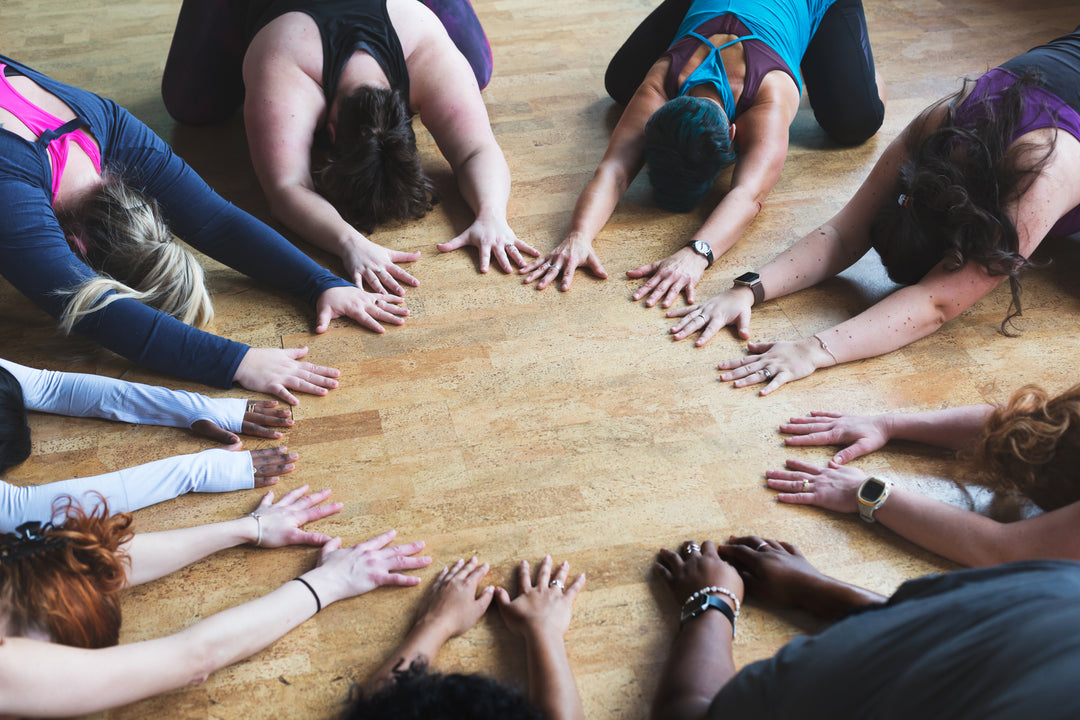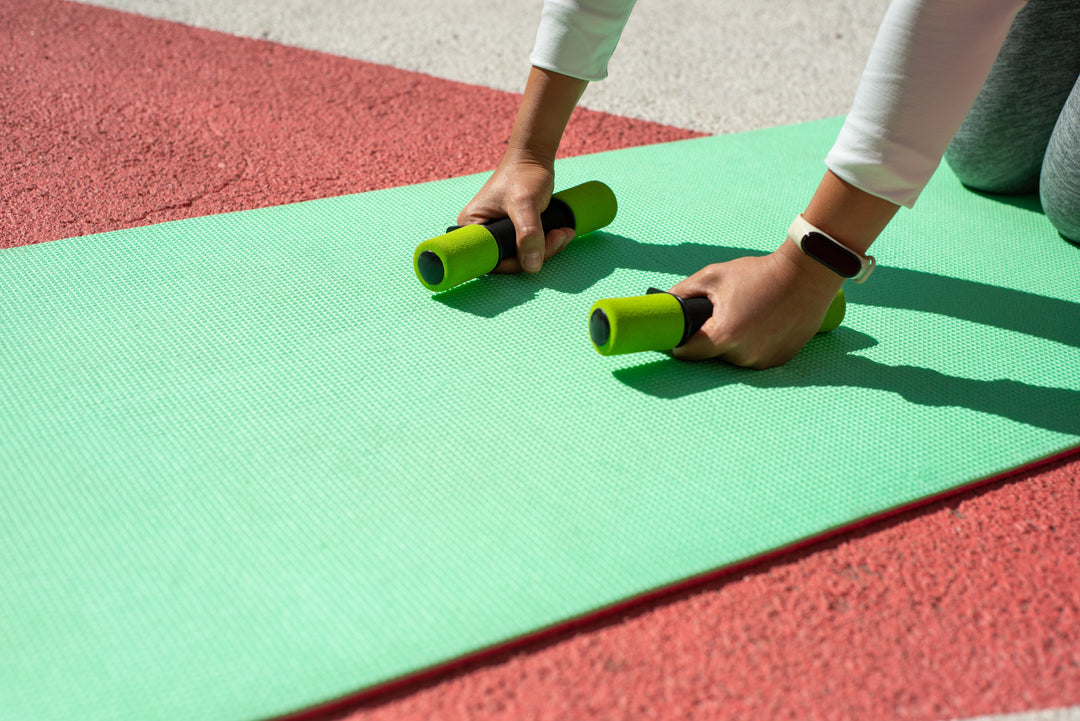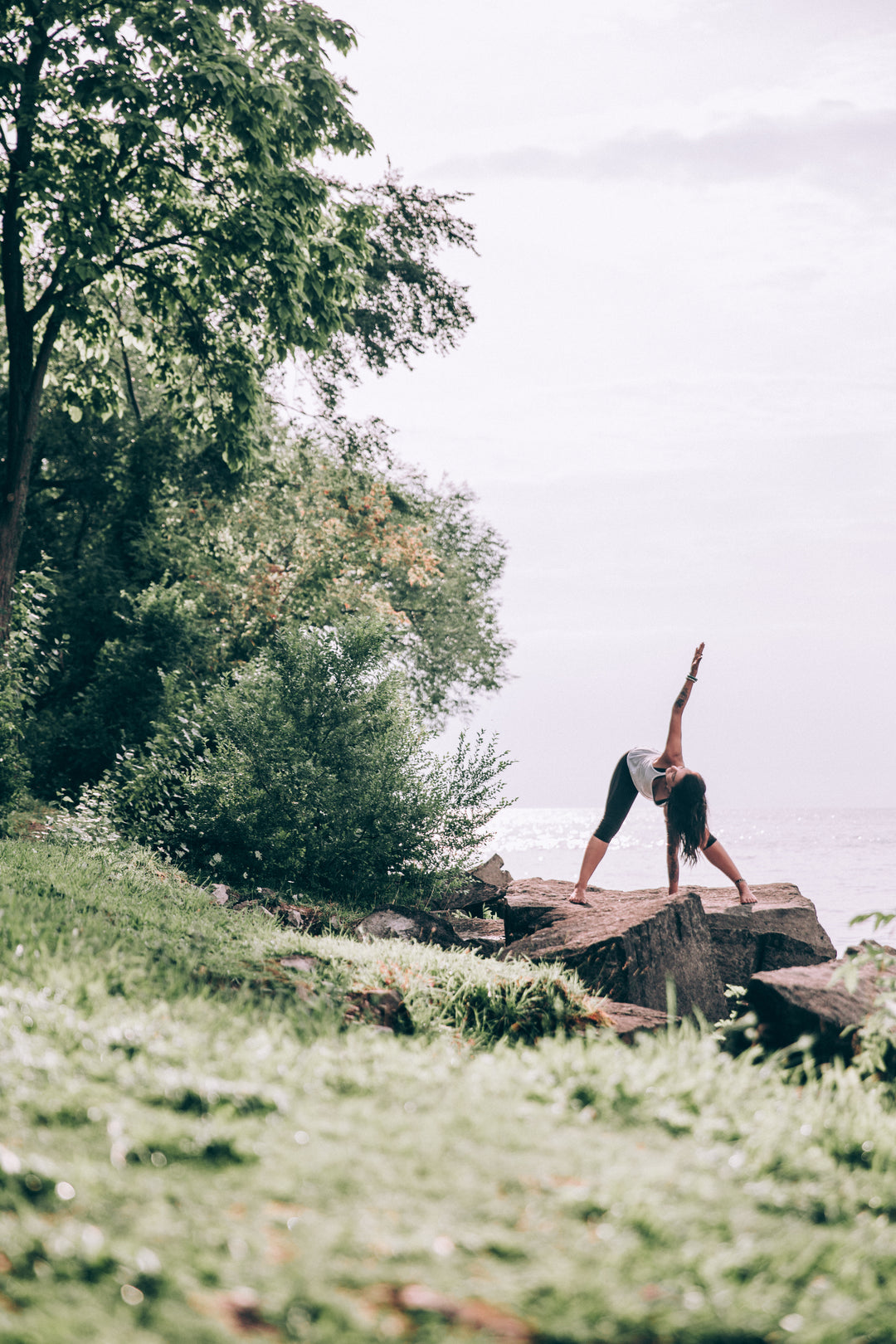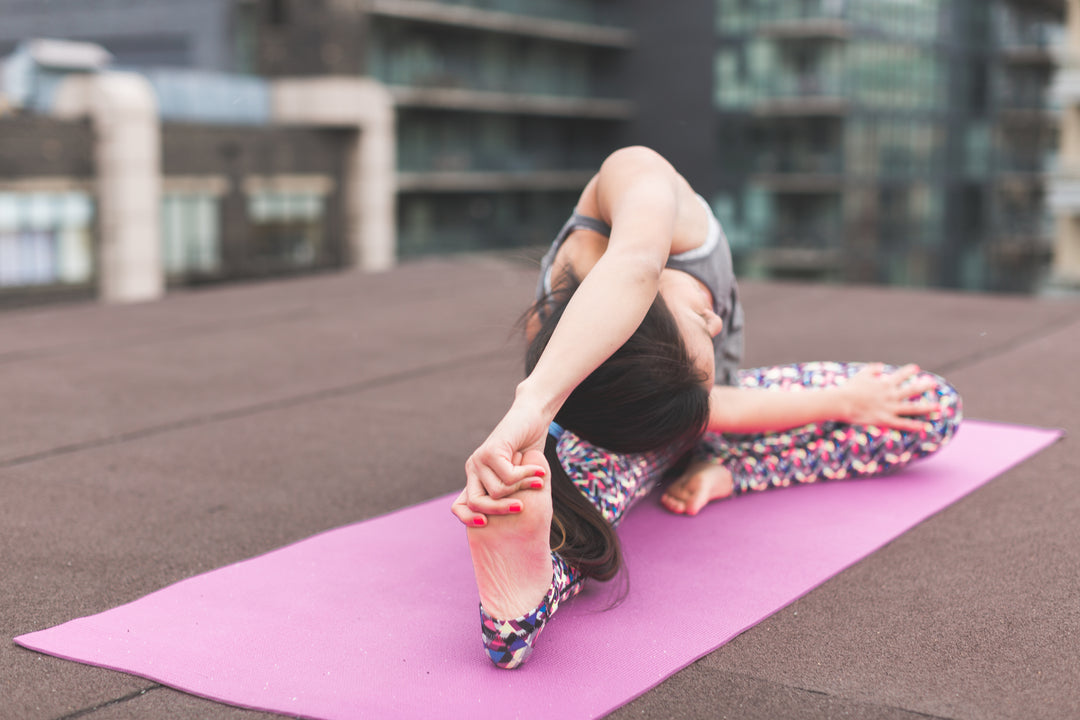Yoga For Joints
Yoga For Joints
The Joint-Friendly Journey: Unlocking the Power of Yoga for Healthier, Happier Joints
An almost never-ending list of aches, pains, ailments and conditions blight people’s health in the UK. However, did you know the most commonly reported health issue is “arthritis or ongoing problems with back or joints”. This was cited by 18.4% of respondents in a 2024 survey.
Think about that.
Close to one in five people who have a medical problem have an issue with their back or joints.
One person in your five-a-side team. One person in your work cubicle. One person sat at the bar with you. If you don’t experience back or joint pain, there’s a good chance someone you know and possibly love, does.
This is why finding a way to manage, mitigate and reduce this pain is essential. Many solutions exist, but yoga can be a viable and affordable choice for many people.
Yoga, an ancient practice combining physical postures, breathing techniques, and meditation, has emerged as a powerful tool for maintaining and improving joint health. This mind-body discipline offers a unique joint care approach beyond traditional exercise.
By incorporating gentle movements, controlled stretches, and weight-bearing poses, yoga helps strengthen the muscles surrounding joints, increase flexibility, and promote better joint function. This added strength and flexibility can assist with other movements and sports, increasing overall health.
From alleviating arthritis symptoms to potentially preventing joint issues, yoga’s multifaceted benefits make it popular for those seeking to nurture their joints and overall physical well-being.
Yoga offers a holistic approach to improving joint health, reducing pain, and enhancing overall well-being. It combines physical postures that strengthen and flex joints, mindfulness practices that reduce stress-related tension, and breathing techniques that promote circulation and healing, all of which work together to create a comprehensive strategy for joint care and maintenance.
Imagine your body as a complex machine, with joints serving as the vital hinges and pivots that allow for smooth, pain-free movement. But what exactly makes up these crucial components, and how does yoga become their ally?
At its core, a joint is where two or more bones come together. But it’s far more than just a simple connection. Picture a joint as a miniature ecosystem, complete with:
Cartilage: A smooth, rubbery tissue that acts as a shock absorber and allows bones to glide without friction.
Synovial fluid: A lubricating liquid that reduces friction and provides nutrients to the cartilage.
Ligaments: Tough, fibrous tissues that connect bones to other bones, providing stability.
Tendons: Strong cords that attach muscles to bones, enabling movement.
Bursae: Small, fluid-filled sacs that cushion bones, tendons, and muscles.
This intricate system allows us to bend, twist, reach, and move in countless ways. But like any complex machinery, joints require proper care and maintenance to function optimally.
This is where yoga enters the picture, offering a holistic approach to joint care that addresses four crucial aspects:
Strength: Building Your Joint’s Support System
Yoga poses, or asanas, work to strengthen the muscles surrounding your joints. Think of these muscles as a natural brace, providing support and stability. When you hold a warrior pose or balance in a tree pose, you actively engage and strengthen the muscles that protect your joints.
Flexibility: Enhancing Range of Motion
Flexibility is about more than just touching your toes. It’s about maintaining a healthy range of motion in your joints. Yoga’s gentle stretches and held poses gradually increase flexibility, allowing joints to move more freely and reducing the risk of injury. As you flow through a sun salutation or ease into a forward bend, you’re encouraging your joints to explore their full potential for movement.
Lubrication: Keeping Things Running Smoothly
Remember that synovial fluid we mentioned? Yoga helps stimulate its production and circulation. Each time you move a joint through its range of motion in a yoga practice, you’re essentially ‘oiling’ it. This increased lubrication reduces friction, eases movement, and helps deliver nutrients to your cartilage, keeping it healthy and resilient.
Stability: Finding Your Balance
Yoga isn’t just about flexibility; it’s equally focused on stability. Many yoga poses challenge your balance, engaging the small stabilising muscles around your joints. This improved stability translates to better joint function daily, reducing the risk of injuries and falls. As you wobble and eventually steady yourself in tree pose, you train your joints to react quickly and maintain alignment.
Addressing these four key aspects—strength, flexibility, lubrication, and stability—will give you a comprehensive approach to joint health. Yoga offers a gentle, sustainable way to nurture and maintain the complex machinery of your joints, helping to keep you moving smoothly and painlessly through life.

Now that we understand the intricate machinery of our joints and how yoga interacts with them, let’s explore the tangible benefits that a regular yoga practice can bring to your joint health. Prepare to be amazed by the transformative power of this ancient practice on your body’s hinges and pivots!
By themselves strength and flexibility are important, and helpful, but when you have them both, life becomes much easier to manage, and enjoyable.
Remember how we compared the muscles surrounding your joints to a natural brace? Well, yoga is like a specialised training program for this internal support system. As you learn poses like Plank, Chaturanga, and Warrior, you’ll soon realise you’re building a fortress around your joints.
Imagine your knee joint. The quadriceps, hamstrings, and calf muscles all play a role in its function. Regular yoga practice strengthens these muscles, creating a robust support network that absorbs shock, stabilises the joint, and reduces the wear and tear on the cartilage and ligaments. As you age, this can be critically important should the worst happen and you take a tumble; having this additional strength in place from the outset can significantly help with recovery.
Through gentle, sustained stretches and mindful movements, yoga gradually encourages your joints to explore their full potential. That stiff shoulder that barely lets you reach the top shelf? After regular practice, you might forget it was ever a challenge. The key is consistency and respect for your body’s limits, allowing for gradual, sustainable improvements in flexibility.
Knowing how to get more from your body is essential; these acts will ensure you feel more active.
Remember the synovial fluid we talked about earlier? Yoga gets this vital liquid flowing like a well-oiled machine. As you move through a pose, synovial fluid swishes around your joints, delivering nutrients and whisking away waste products.
A bit like giving your joints a spa day with every practice. The gentle compression and release in weight-bearing poses act like a pump, encouraging fresh synovial fluid to circulate. This increased flow means better lubrication, less friction, and happier, healthier joints.
Cartilage is like the brake pads of your joints – essential for smooth function, but prone to wear and tear. Unlike other tissues, cartilage doesn’t have a direct blood supply. It relies on joint movement to get nutrients. This is where yoga shines.
The varied movements in a yoga practice ensure that your cartilage gets ‘fed’ from all angles. It’s like giving your cartilage a balanced diet, helping to maintain its structure and function. So, every Downward Dog or gentle twist is actually a feast for your cartilage!
While it might not be the first thing you think of for joint health, bone density plays a crucial role. Stronger bones provide a more stable foundation for your joints. The good news? Many yoga poses are weight-bearing, which encourages bone growth.
When you hold poses like Warrior II or Tree Pose, you’re literally building bone.

While yoga is a great way to prepare for a lengthy run, it is also an effective way to make life more bearable for many people. The following factors make yoga a great choice for those who struggle day to day.
For those with joint pain, the thought of exercise can be daunting. This is where yoga’s gentle nature becomes a superpower. Unlike high-impact activities that stress your joints, yoga offers a way to move, stretch, and strengthen without excessive strain.
The controlled, low-impact movements in yoga allow you to build strength and flexibility without aggravating sensitive joints. Plus, focusing on breath and mindfulness can help shift your perception of pain, making it more manageable. Just remember to keep breathing; steady, focused breathing can help when things get tougher.
For the millions living with arthritis, yoga can be a game-changer. Studies have shown that regular yoga practice can help reduce joint pain, improve joint flexibility, and lower stress levels in people with various forms of arthritis.
It’s not a cure, but for many, yoga is a powerful way to reclaim control and improve quality of life. Yoga offers a holistic approach to joint health that goes beyond simply treating symptoms. It’s a practice that nurtures your joints from the inside out, promoting strength, flexibility, and overall function while providing a gentle path to pain management.

Now that you understand yoga’s powerful impact on your joints, why not try it? Remember, yoga is for everyone, regardless of age, fitness level, or flexibility. Here are some ways to get started:
Begin with Gentle Practices: If you’re new to yoga or have joint concerns, start with gentle styles like Hatha or Yin yoga.
Complement Your Other Activities: Are you a runner looking to protect your joints? Check out our guide on Yoga for Runners to learn how yoga can enhance your running experience while safeguarding your joints.
Embrace the Mental Benefits: Yoga is as much about mental health as it is about physical well-being. Explore our Yoga for Mental Health section to discover how your joint health journey can boost your mental wellness.
Remember, yoga isn’t just a temporary fix or a passing trend. It’s a lifelong practice that evolves with you, adapting to your changing needs and goals. Whether you’re in your 20s looking to prevent future joint issues, in your 40s managing the beginnings of joint discomfort, or in your 60s seeking to maintain mobility, yoga has something to offer you.
So, unroll your mat, take a deep breath, and step into the wonderful world of yoga. Your joints will thank you today and for many tomorrows to come. Your journey to joint vitality starts now. Namaste.
Resources:
UK Healthcare Statistics: https://www.forthwithlife.co.uk/blog/uk-healthcare-statistics/
Yoga for Overall Health: https://www.campbellclinic.com/benefits-yoga-joints-overall-health
Yoga and Joints: https://www.thecenteroregon.com/medical-blog/yoga-and-your-joints/
Yoga Poses for Joint Health: https://www.tricitymed.org/2016/12/yoga-poses-joint-health/
Yoga Beneficial for Bodies and Minds: https://versusarthritis.org/news/2022/may/why-are-yoga-and-tai-chi-beneficial-for-our-bodies-and-minds/
Yoga Benefits: https://www.hopkinsmedicine.org/health/wellness-and-prevention/9-benefits-of-yoga
Yoga Myths Debunked: https://www.arthritis.org/health-wellness/healthy-living/physical-activity/yoga/top-5-yoga-myths-debunked
Yoga for Arthritis: https://www.ncbi.nlm.nih.gov/pmc/articles/PMC3026480/
